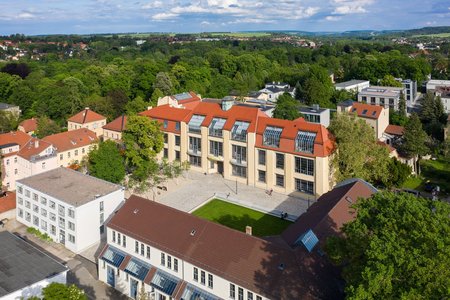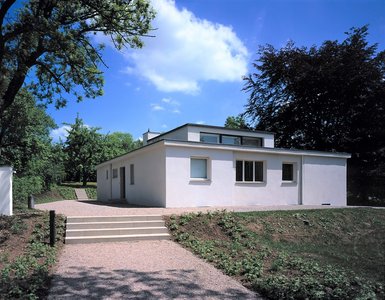
Weimar
The city of Weimar

Weimar is a city that can look back on an incredibly rich and diverse history. This includes both beautiful and dark chapters of contemporary German history. The city played an important role especially during the Weimar Classic period at the end of the 18th and beginning of the 19th century. This period under the reign of Duchess Anna Amalia and her son Duke Carl August was shaped by Goethe, Schiller, Falk and Herder, among others. During this time, artistic and cultural life flourished in the city and in other regions of Germany.
The city experienced an additional boom in terms of culture in the 19th century. Franz Liszt, Richard Wagner and Arnold Böcklin made significant contributions to this culturally diverse development.
A milestone in Weimar history occurred in 1919 when the constituent assembly took place in the German National Theater. As a result of the National Assembly, the following years up to 1933 were referred to as the "Weimar Republic".
However, in addition to its great cultural importance over the centuries, Weimar also had dark chapters in the city's history. During the Nazi era, the Buchenwald concentration camp was built on the Ettersberg near Weimar.
The dark and the bright chapters of the city can still be experienced today through numerous museums and the old town and make Weimar a unique cultural location in Germany. Last but not least, these cultural heydays and diversity led to the founding of an art school in 1860 and finally to the founding of the Bauhaus.
The Bauhaus – the Bauhaus-Universität Weimar


The State Bauhaus, the most influential design school of the 20th century, was founded by Walter Gropius in 1919 in what is now the main university building. Outstanding specialists from different disciplines and countries have had a lasting impact on the design of the living environment with new types of art, technology and science. What they produced was an answer to the burning questions of the art, culture and society of their time - modernity. Together with their students, they have also revolutionized education.
The name Bauhaus-Universität Weimar ties in with this history. The university is a living institution, not a museum. New methods are used to seek answers to central questions of today's art and culture, technology, science and society.
